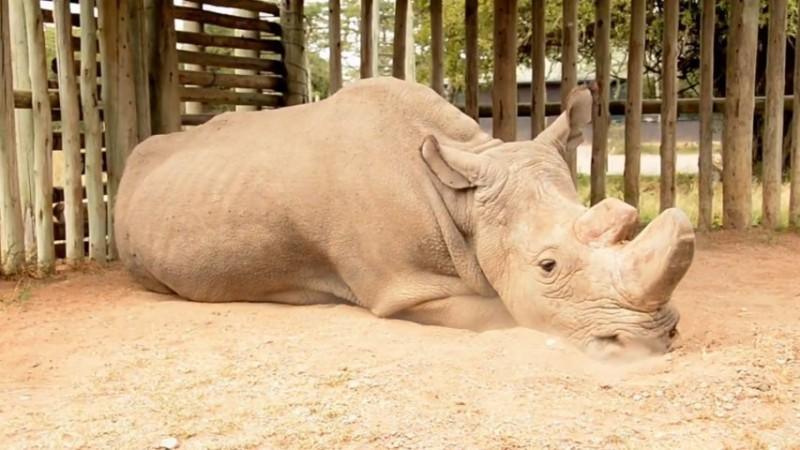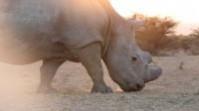
Scientists have raised hopes that the near-extinct northern white rhinos can be saved by the hybrid embryos from the frozen sperm of dead males. The first rhino embryos which have been created in a test tube can help save the rhinos by high-tech assisted reproduction.
Only two of these northern white rhino (NWR) females - a mother and her daughter named Najin and Fatu - are still alive, both are living in Ol Pejeta sanctuary in Kenya. They are both protected by armed guards round the clock.
The last male of these species (NWR) called Sudan died of age-related complications this year in Kenya. He made headlines a few months before his death when the conservationists signed him up to Tinder to help find his mating partner in a southern white rhino (SWR).

Unless the IVF techniques work out, these species are doomed to die. As there were very few frozen NWR eggs exist, the scientists started to create hybrid embryos and see how the technique works.
The hybrid embryos were created with frozen sperm from dead NSW males and the eggs of SWR females. There are 21,000 SWRs and they can be used as surrogates. The two northern white females cannot bear the offspring, and hence, the surrogacy.
The critical stage for scientists is to take the eggs from the last two surviving NWR females and make pure NWR embryos. Lack of genetic diversity to build a healthy population is another challenge if the implantation of the pure NWR embryos does not lead to the birth of healthy calves.
With the help of stem cell technology, maybe the scientists can turn the cells from the dozen sample skin stored from different NWR into eggs and sperm which could create genetically diverse embryos.
Professor Thomas Hildebrandt, head of reproduction management at the Leibniz Institute for Zoo and Wildlife Research in Berlin, Germany said, "These are the first in-vitro produced rhinoceros embryos ever. They have a very high chance to establish a pregnancy once implanted into a surrogate [SWR] mother."
According to Thomas Hildebrandt who led the work published in the journal Nature Communications, it's a race against time. He said, "Taking into account 16 months pregnancy, we have a little more than a year to have a successful implantation."
Hildebrandt hopes the first NWR calf will be born within three years. "We are quite confident with the technology we have developed."
The dangerous experiment
The IVF project was first conceived in 2008 when it was apparent that the species days were numbered, hugely due to poaching for its horn, destruction of wild habitat and civil war.
The NWR can only reproduce in the zoos very slowly. Jan Stejskal, who is a part of the research team said, "We now see clearly a moral obligation not only to help the NWR to somehow survive in captivity but later even help them get back to their original range and be wild again."
The project team is hopeful of getting permission to take eggs from the last two female NWRs from the Kenyan authorities. Even the eggs of elderly or infertile SWR have produced embryos successfully. But it is a tedious and risky procedure which requires a long device to be inserted in the rectum while the rhinos must be put under anesthetic for two hours.
Hildebrandt said, "We are highly afraid that something unexpected may happen during this procedure which is related to the heart or something else – that would be a nightmare. But we are extremely confident we can get the [eggs] out."
IVF Techniques
IVF techniques have not been a big success. IVF has been spoken about since the 1970s to save the extinct species. But even artificial insemination has only really helped save three endangered mammals - the giant panda, Asian elephant and black-footed ferret.
Experts from this field warn that it is too late already. But Hildebrandt said, "The northern white rhino didn't fail in evolution. It failed because it's not bulletproof. It was slaughtered by criminals which went for the horn because the horn costs more than gold."

















